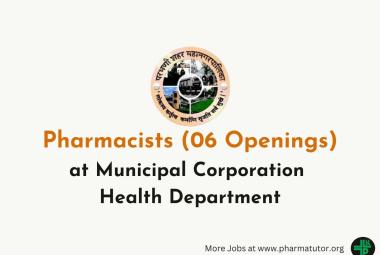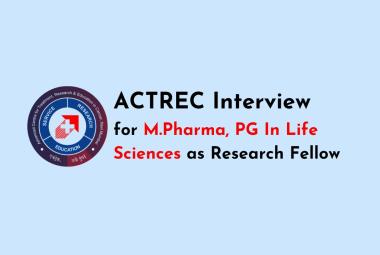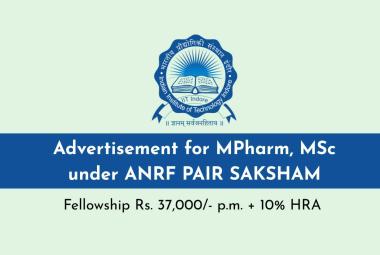{ DOWNLOAD AS PDF }
 ABOUT AUTHORS:
ABOUT AUTHORS:
Singh Divya1, Siddhi Shrimali2, Rathore KS2*
1Department of Pharmacology, Jaipur College of Pharmacy, Jaipur, Rajasthan, India
2Department of Pharmaceutics, BN Institute of Pharmaceutical Sciences, Udaipur, Rajasthan, India
*kamalsrathore@gmail.com
ABSTRACT
Parkinsonism disease (PD) is a progressive neurological disorder. Degeneration of dopamine producing cells in the substantia nigra (part of the basal ganglia) leads to a decreased dopamine production. The cause of the damage is unknown. The main known risk factor is age. Parkinson’s affects functional activities such as balance, walking, speech, handwriting, typing, fastening buttons, driving, and many other simple, or complex but familiar and routine activities, as they are usually controlled by the mechanisms of dopamine and the basal ganglia. This review briefly focuses on deep brain stimulation neurosurgical treatment. Levodopa was the first drug approved specifically for Parkinson’s disease. Levodopa is converted by enzymes in the brain to produce dopamine, thereby supplementing function that has been lost as dopamine-producing neurons die.Topics covered in the review includes pathogenesis, mechanism of action, side effects of medicines and neurological surgery.
[adsense:336x280:8701650588]
REFERENCE ID: PHARMATUTOR-ART-2311
|
PharmaTutor (ISSN: 2347 - 7881) Volume 3, Issue 2 How to cite this article: D Singh, S Shrimali, KS Rathore; A Review on Parkinson’s Disease: Its Pathophysiology, Treatment and Surgery; PharmaTutor; 2015; 3(2); 25-32 |
INTRODUCTION
Parkinsonism disease (PD) is a clinical syndrome involving slowed mobility (bradykinesia), at least one of the following three features: tremor, rigidity and postural instability1. Parkinson’s disease (PD) is thought to affect more than 1 million people in the United States alone, 1 of every 100 individuals above the age of 55.2 The treatment of PD would be symptomatic (control or reduction of symptoms), neuroprotective (halting of disease progression) and neuroregenerative (reversal of disease process). A PD diagnosis is based on evidence of at least two out of three specific signs and symptoms: tremor, slowed mobility (bradykinesia) and stiffness (rigidity).
Parkinson’s disease is disorder of motor and non- motor symptoms. Motor symptoms such as Bradykinesia (slowness of movement), Rigidity (stiffness of movement), Tremor (involuntary shaking of the hands, feet, arms, legs, jaw or tongue), Postural instability (tendency to fall, usually when pivoting) (Figure1). Non-motor symptoms include changes in mood, memory, blood pressure, bowel and bladder function, sleep, fatigue, weight and sensation. Some symptoms have both features (motor and non-motor symptoms)3.

Figure 1: Parkinson’s disease symptoms4
[adsense:468x15:2204050025]
Normal movement depends on the appropriate production of a chemical messenger or ‘neurotransmitter’ called dopamine by cells in the area of the brain called the substantia nigra (Figure 2). Parkinson’s disease is a progressive neurological condition, resulting from the degeneration of dopamine producing neurones in the substantia nigra, which is located within the basal ganglia, deep in the lower region of the brain, on either side of the brain stem. Clinical signs of Parkinson's are evident when about 80% of the dopamine-producing neurons are lost. Dopamine is a major neurochemical messenger that promotes the functions of the basal ganglia, which is also where the dopamine is produced5.

Figure 2: In Parkinson’s disease, dopamine-producing cells in the brain degenerate6
Etiology of Parkinson’s disease
Environmental Factors
The possible role of environmental factors has been addressed by a number of epidemiologic studies that have been well reviewed by others. Many of these studies have shown associations between rural residence, well-water drinking, herbicide exposure and the risk of developing PD7. A role for environmental factors in the cause of PD was given major impetus with the discover in 1983 that exposure to Mitochondrial complex I inhibitor (MPTP) is capable of inducing parkinsonism in humans8.
Genetic factor
The younger the age of symptom onset, the more likely genetic factors play a dominant role. This concept was based largely on twin studies conducted in the early 1980s that demonstrated a very low rate of concordance for the disease among identical twins9. Familial cases are relatively rare (5-10%). The PD genes that have been identified and studied in some details α-synuclein, parkin, and ubiquitin C-terminal hydrolase L1 (UCHL1) appear to participate in the ubiquitin-proteasome pathway, a particularly compelling finding considering the Lewy Body (LB) protein aggregates that characterize PD neuropathology (Figure 3)10.

Figure 3: Mechanisms of Selective neuronal vulnerability in Parkinson’s disease11
Pathogenesis of Parkinson’s disease
The primary deficit in PD is a loss of the neurons in the substantia nigra pars compacta that provide dopaminergic innervations to the striatum. Dopamine (DA) is synthesized within neuronal terminal from the precursor tyrosine by the sequential actions of the enzymes tyrosine hydroylase, producing the intermediary L-dihydroxyphenylalanine (DOPA) and aromatic L-amino acid decarboxylase. In the terminal, dopamine is transported into storage vesicles by a transporter protein associated with the vesicular membrane. The actions of dopamine are terminated by the sequential actions of the enzymes catechol-o-methyltransferase (COMT) and monoamine oxidase (MAO) or by reuptake of dopamine into the terminal. A hallmark pathologic feature of PD, and essential for itspathologic diagnosis, is loss of DA neurons of the substantianigra pars compacta (SNpc). The key feature of basal ganglia function, which accounts for the symptoms observed in PD as a result of loss of dopaminergic neurons, is the differential effect of dopamine on the direct and indirect pathways. The dopaminergic neurons of the substantia nigra pars compacta (SNpc) innervate all parts of the striatum; however, the target striatal neurons express distinct types of dopamine receptors. The striatal neurons giving rise to the direct pathway express primarily the excitatory D1 dopamine receptor protein, while the striatal neurons forming the indirect pathway express primarily the inhibitory D2 type (Figure 4).
 Figure 4: Pathophysiology of Parkinson’s disease. Parkinson’s is characterized by degeneration of dopaminergic neurons in the substantia nigra pars compacta12.
Figure 4: Pathophysiology of Parkinson’s disease. Parkinson’s is characterized by degeneration of dopaminergic neurons in the substantia nigra pars compacta12.
Thus, dopamine released in the stratium tends to increase the activity of the direct pathway and reduce the activity of indirect pathway, whereas the depletion that occurs in PD has the opposite effect. The net effect of the reduced dopaminergic input in PD is to increase markedly the inhibitory outflow from the inhibitory outflow from the SNpc. This degeneration leads to increased inhibition of the globus pallidus externa, which in turn causes increased inhibitory output of the globus pallidus interna. This is in part due to increased excitation by the subthalamic nucleus. The increased inhibition of the thalamus is central to PD’s effects. Reduced input to the motor cortex leads to rigidity, bradykinesia and other symptoms. At the time of death, evenmildly affected PD patients have lost about 60% of theirDA neurons, and it is this loss, in addition to possible dysfunctionof the remaining neurons, that accounts for theapproximately 80% loss of DA in the corpus striatum. The terminalsof DA neurons degenerate, there is a reduction in high affinityDA uptake (Figure 5)2,13.
 Figure 5: Parkinson’spatients show a decrease in dopamine levels in the brain14
Figure 5: Parkinson’spatients show a decrease in dopamine levels in the brain14
Treatment
Parkinson’s disease is still an incurable progressive disease, but treatment substantially improves quality of life and functional capacity15.In clinical practice, dopamine replacement with levodopa provides the most effective symptomatic treatment for PD16. Other medications used to treat PD include dopamine agonists, anticholinergics, monoamine oxidase type B inhibitors, catechol-O-methyltransferase inhibitors, amantadine, and carbidopa/levodopa, the gold standard of symptomatic PD therapy (Figure 6, 7)17, 18.The central objective of using any of the below medications is to control or manage motor symptoms. A summary of the medications used to treat the primary motor symptoms of PD including typical forms, mechanism of action and side effects (Table 1)13, 19, 20, 21, 22, 23.

Figure6: Treatment options for Parkinson’s disease and the mechanism of action24

Figure7: Medication work in Parkinson’s disease25
NOW YOU CAN ALSO PUBLISH YOUR ARTICLE ONLINE.
SUBMIT YOUR ARTICLE/PROJECT AT editor-in-chief@pharmatutor.org
Subscribe to Pharmatutor Alerts by Email
FIND OUT MORE ARTICLES AT OUR DATABASE
Table: 1 Summary of the medications used to treat the Parkinson’s disease
|
Drug |
Branded name |
Forms available |
Mechanism of action |
Side effects |
|
|
Levodopa |
|||||
|
Levodopa combined with Carbidopa
|
Sinemet |
Tablets |
Levodopa is converted to dopamine by decarboxylation, primarily within the presynaptic terminals of dopaminergic neurons in the striatum. Levodopa is most frequently combined with Carbidopa/ Benserzaide to slow enzyme (aromatic L-amino acid decarboxylase) breakdown of Levodopa before it reaches the brain. |
Nausea Vomiting Loss of appetite Lightheadedness Lowered blood pressure Confusion |
|
|
Sinemet CR |
Controlled release tablets |
||||
|
Caramet CR |
Controlled release tablets |
||||
|
Lecado |
Prolonged release tablets |
||||
|
Parcopa |
Oral Disintegrating |
||||
|
Levodopa combined with benserzaide |
Madopar |
Capsules, dispersible tablets |
|||
|
Madopar CR |
Controlled release capsules |
||||
|
Carbidopa combined with Levodopa and Entacapone |
Stalevo |
Tablets |
|||
|
Dopamine Agonists |
|||||
|
Bromocriptine |
Parlodal |
Tablets, capsules |
Bromocriptine is a strong agonist of the D2 class of dopamine receptors and a partial antoganist of the D1 receptors, while pergolide is an agonist of both classes. Ropinirole and pramipexole have selective activity at D2 class sites (especially at the D2 and D3 receptor proteins) and little or no activity at D1 class sites. |
Daytime sleepiness, sudden unanticipated sleep ("sleep attacks"), hallucinations or confusion. |
|
|
Pergolide |
Permax |
Tablets |
|||
|
Ropinirole |
Requip |
Tablets |
|||
|
Adartrel |
Tablets |
||||
|
Ralnea XL |
Prolonged release tablets |
||||
|
Spiroco XL |
Prolonged release tablets |
||||
|
Pramipexole |
Mirapex |
Tablets |
|||
|
Mirapexin prolonged release |
Prolonged release tablets |
||||
|
MAO-B Inhibitors |
|||||
|
Selegiline |
Eldepryl |
Tablets, liquid |
Selegiline and rasagiline inhibit the action of monoamine Oxidase isoenzyme type B (MAO-B). MAO-B prevents the breakdown of dopamine, leading to greater dopamine availability.
|
Dry mouth, anxiety, sleeps disturbances, confusion, nausea, dizziness and Hallucinations. |
|
|
|
Zelapar |
Tablets that dissolve on the tongue |
|||
|
Rasagiline |
Azilect |
Tablets |
|||
|
COMT-Inhibitors |
|||||
|
Tolcapone |
Tasmar |
Tablets |
Catechol O-methyltransferase (COMT) inhibitors allow a larger amount of Levodopa to reach the brain, thus raising dopamine levels there. They help provide a more stable, constant supply of Levodopa, which makes its beneficial effects last longer and manage off times better. |
Nausea, orthostatic hypotension, confusion and hallucination. An important adverse effect associated with tolcapone is hepatotoxicity. |
|
|
Entacapone |
Comtan |
Tablets |
|||
|
Glutamate Antagonist |
|||||
|
Amantadine |
Symmetrel |
Capsules, syrup |
Amantadine’s mechanism of action is not clear. A blockade of N-methyl-D aspartate (NMDA) glutamate receptors and an anticholinergic effect are proposed, Whereas other evidence suggests it might alter dopamine release or re-uptake. |
Dizziness, dry mouth, lithargy , insomnia, confusion and hallucinations |
|
|
Anticholinergics |
|||||
|
Trihexyphenidyl |
Artane |
Tablets, Elixir |
The actual mechanism of action is not clear. In Parkinson’s diseasecauses a relative imbalance between the dopaminergic and cholinergic neurological pathways. It has long been believed that anticholinergics can correct this imbalance in less advanced forms of Parkinson’s by reducing the degree of neurotransmission mediated by neostriatal acetylcholine. |
Sedation, Mental confusion, Constipation, Urinary retention and Blurred vision |
|
|
Benztropine mesylate |
Cogentin |
Tablets |
|||
Surgery
Deep brain stimulation (DBS) should only be considered for patients with PD who have displayed a very clear and dramatic response to L-dopa. When motor fluctuations and dyskinesia cannot be managed by medications, surgical treatments for PD are often considered, DBS may provide an alternative. Patients with medication resistant tremor may also benefit from surgical therapy. The current surgery approved by the Food and Drug Administration (FDA) for the treatment of PD includes deep brain stimulation (DBS). In 1997, the FDA approved the use of the Active Tremor Control Therapy which uses a DBS electrode, extension wire and an implantable pulse generator (IPG) for thalamic stimulation to control parkinsonian and essential tremor. DBS is carried out as a staged procedure in which cerebral electrode implantation is performed under local or no anesthesia. The electrode can be placed in different parts of the brain. Thalamic stimulation in which the electrode tip is placed in the ventrointermediate (VIM) nucleus of the thalamus primarily to control tremor. The electrode tip can be placed in the Globus pallidus interna (GPi) to control the primary symptoms of PD (tremor, rigidity, slowness) and dyskinesia. In the stimulation of Subthalamic nucleus the electrode tip is placed in the STN to control the primary symptoms of PD (tremor, rigidity, and slowness) and dyskinesia. During postoperative management, stimulation is increased while L-dopa dosage is reduced. DBS treat the underlying symptoms of the disease, not the cure of PD. Adverse behavioral effects are mania, laughing episodes, impulsive behaviors, depression and anxiety have occurred during the first few months after surgery26, 27.
CONCLUSION
The pathogenesis, medication and surgery of PD are presented in this review; briefly highlight the more important aspects of these topics. Although Parkinson’s disease was first described almost two centuries ago, it is only recently that we have begun to understand the complex nature of the functional deficits that it entails or its neurobiological causes. In this review, briefly discussed about medications which currently available for symptomatic treatment and future developments in the treatment of PD. PD treatment plan consist of appropriate medications, regular exercise, a healthy diet, social engagement and cognitive activities, counseling and other therapies. Deep brain stimulation (DBS) surgery may be a reasonable therapeutic option for some individuals.
REFERENCES
1. Scottish Intercollegiate Guidelines Network (SIGN). Diagnosis and pharmacological management of Parkinson’s disease. A national clinical guideline SIGN; 2010 Jan (SIGN publication no. 113): 1-61.
2. Zigmond MJ, Burke RE. Pathophysiology of Parkinson’s disease. Neuropsychopharmacology: The Fifth Generation of Progress, American College of Neuropsychopharmacology 2002:1781-1793.
3. Houghton D, Hurtig H, Metz S, Brandabur M. Parkinson’s Disease: Medications. National Parkinson Foundation; 2014: 1-72.
4. siberiantimes.com/science/casestudy/news/a-major-breakthrough-in-treating-parkinsons-disease-cannot-reach-patients/ Accessed on Nov. 21, 2014.
5. Aragonans A, Ana BR, Ferguson JC, Jones C, Tugwell C. The Professional’s Guide to Parkinson’s disease. Parkinson’s disease Society of the United Kingdom, 2007; 158 p. Charity registered in England and Wales No. 258197 and in Scotland No. SC037554.
6. wearingoff.eu/what-is-parkinsons/causes-of-parkinsons-disease/ Accessed on Nov. 23, 2014.
7. Tanner CM. Epidemiology of Parkinson’s disease. Neurol Clin 1992; 10:317–329.
8. Langston JW, Ballard PA, Tetrud JW. Chronic Parkinsonism in humans due to a product of meperidine-analog synthesis. Science 1983; 219:979–980.
9. Ward CD, Duvoisin RC, and Ince SE, et al. Parkinson’s disease in 65pairs of twins and in a set of quadruplets. Neurology 1983; 33:815–824.
10. Dauer W, Przedborski S. Parkinson’s Disease: Review Mechanisms and Models. Neuron 2003 Sept; 39:889–909.
11. pharmainfo.net/reviews/parkinsons-disease Accessed on Nov. 22, 2014.
12. sharinginhealth.ca/conditions_and_diseases/parkinsons.html Accessed on Nov. 23, 2014.
13. Hardman JG, Limbird LE, Gilman GA. Treatment of central nervous system degenerative disorders. 10th Ed. The pharmacological basis of therapeutics; 2001. Chapter 22; p. 549-560.
14. blogs.brandeis.edu/flyonthewall/translational-findings-how-fruit-flies-are-helping-us-understand-parkinsons-disease/ Accessed on Nov. 22, 2014.
15. Lees AJ, Hardy J, Revesz T. Parkinson’s disease. Seminar 2009 June; 373:2055-2066.
16. Hametner E, Seppi K, Poewe W. The clinical spectrum of levodopa-induced motor complications. J Neurol 2010; 257(2):S268-S275.
17. Wood LD, Neumiller JJ, Carlson JD, Setter SM, Corbett CF. Challenges of medication management in hospitalized patients with Parkinson’s disease. Am J Health-Syst Pharm 2010; 67:2059-2063.
18. Jankovic J, Aguilar LG. Current approaches to the treatment of Parkinson’s disease. Neuropsychiatr Dis Treat 2008; 4(4):743-757.
19. Parkinson’s disease Society of the United Kingdom. Drug treatments for Parkinson. A charity registered in England and Wales (258197) and in Scotland (SC037554); 2012 Aug.
20. Robottom BJ. Efficacy, safety, and patient preference of monoamine oxidase B inhibitors in the treatment of Parkinson’s disease. Dovepress 2011 Jan; 5:57–64.
21. Brocks DR. Anticholinergic drugs used in Parkinson's disease: An overlooked class of drugs from a pharmacokinetic perspective. J Pharm Pharmaceut Sci 1999; 2 (2):39-46.
22. michaeljfox.org/mobile/topic.php?medication. Accessed on 16 sept, 2014.
23. Horstink M, Tolosab E, Bonuccellic U, Deuschld G, Friedmane A, Kanovskyf P, Larseng JP, Leesh A, Oerteli W, Poewej W, Rascolk O, Sampaiol C. Review of the therapeutic management of Parkinson’s disease. Report of a joint task force of the European Federation of Neurological Societies and the Movement Disorder Society–European Section. Part I: early (uncomplicated) Parkinson’s disease. European Journal of Neurology 2006; 13:1170–1185.
24. discoverymedicine.com/Ming-ming-Wen/2012/12/24/advances-and-challenges-in-the-dosage-form-design-for-the-treatment-of-parkinsons-disease/ Accessed on Nov. 22, 2014.
25. azilect.com/AboutParkinsonsDisease/ParkinsonsTreatment. Accessed on Nov. 22, 2014.
26. Tarsy D. Deep Brain Stimulation in Parkinson Disease: Important Information for Patients and Families. Research report, Parkinson report; Winter 2007:8-10.
27. Pahwa R, Lyons KE, Nazzaro M. Deep Brain Stimulation for Parkinson’s disease. Stereotactic and Functional Neurosurgery University of Kansas Medical Center. Accessed on Nov. 11, 2014.
NOW YOU CAN ALSO PUBLISH YOUR ARTICLE ONLINE.
SUBMIT YOUR ARTICLE/PROJECT AT editor-in-chief@pharmatutor.org
Subscribe to Pharmatutor Alerts by Email
FIND OUT MORE ARTICLES AT OUR DATABASE









